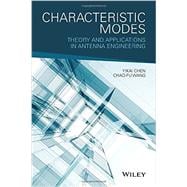Describes how to systematically implement various characteristic mode (CM) theories into designs of practical antenna systems
This book examines both theoretical developments of characteristic modes (CMs) and practical developments of CM-based methodologies for a variety of critical antenna designs. The book is divided into six chapters. Chapter 1 provides an introduction and discusses the recent advances of the CM theory and its applications in antenna engineering. Chapter 2 describes the formulation of the characteristic mode theory for perfectly electrically conducting (PEC) bodies and discusses its numerical implementations. Chapter 3 presents the CM theory for PEC structures embedded in multilayered medium and its applications. Chapter 4 covers recent advances in CM theory for dielectric bodies and also their applications. Chapter 5 discusses the CM theory for N-port networks and its applications to the design of antenna arrays. Finally, Chapter 6 discusses the design of platform-integrated antenna systems using characteristic modes.
This book features the following:
- Introduces characteristic mode theories for various electromagnetic structures including PEC bodies, structures in multilayered medium, dielectric bodies, and N-port networks
- Examines CM applications in electrically small antennas, microstrip patch antennas, dielectric resonator antennas, multiport antennas, antenna arrays, and platform mounted antenna systems
- Discusses numerical algorithms for the implementation of the characteristic mode theories in computer code
Characteristic Modes: Theory and Applications in Antenna Engineering will help antenna researchers, engineers, and students find new solutions for their antenna design challenges.








